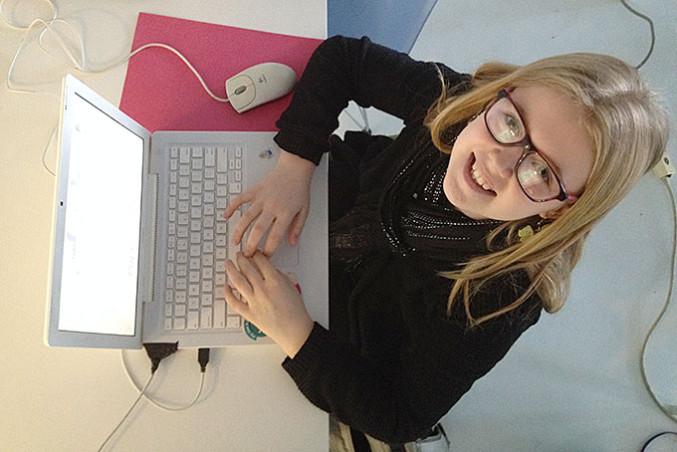By Jill Symington
As I stand in line trying to decide what movie to watch—it’s not like there are any television previews for Bollywood films—the lady behind the counter clears her throat.
She is impatiently waiting for my money.
A group of girls beside me decide to see Kaho Naa Pyaar Hai because “the guy’s really hot.”
I hand the woman my money and say, “I’ll see that one.”
Kaho Naa Pyaar Hai is one of many Indian films being shown on commercial screens in Toronto, including AMC and Famous Players.
Bollywood, the nickname for the Indian film industry based in Bombay, is a new phenomenon on the big screen.
Indian movies were first played in small Toronto theatres specializing exclusively in South Asian films. Among them are the Albion Cinema on Albion Road near Kipling Avenue, Woodside Square Cinemas at McCowan Road near Finch Avenue, Woodside Square Cinemas at McCowan Road near FInch Avenue and Lakeside CInemas in Burlington.
Woodside has been showing Bollywood movies on its three screens since 1996. Manager Edward Factor says interest is high.
“We are getting a good audience from the Indian community,” he says. “They want to get a close relationship with their culture by seeing the movies.”
In November, AMC started showing Bollywood (or INdian) flicks.
“If you go to AMC, it’s packed when the movies come out,” says Jagseer Malhi, a third-year computer student at Ryerson, “and even after two weeks, it’s still really crowded.”
IN January, Famous Players started running Bollywood films at Cedarbrae 8 in Scarborough, Gateway and Cinemas in Brampton, and the Sussex Centre Cinemas in Cooksville. They are currently showing Hey! Ram, Tamil and Kaho Naa Pyaar Hai.
“AMC and Cineplex theatres are basically English and if you show Indian movies people will most likely come for a while,” Facto says. “But it’s a different atmosphere at Woodside. It’s basically an Indian theatre, so all the people coming are Indian and they like it here.”
Famous players is renting out empty theatres to an independent promoter showing Bollywood movies.
“They are very popular,” says Sudhir Mathur, manager of the Sussex Centre Cinemas. “It’s also something different for them to watch, that has their culture and is easier to understand. And they can watch English movies anywhere and they watch enough of them.”
Kush Sharma, a third-year information technology management student and president of the Hindu Students Association at Ryerson, went to see his favourite movie, Taal, at the 752-seat Cinesphere last summer.
“I actually had to fight for seats,” he says. “We only got there 10 minutes after the gates opened and all the good seats were taken.”
Sharma watches at least one Indian movie a week. “I went to see Taal because I’d never seen an Indian movie on the big screen,” he says. “I wanted to go just for the experience.”
A true Bollywood-style movie-watching experience includes a three-to-four-hour film with intermission and a plot thicker than molasses. Genres cover everything from action to romance as well as lengthy song-and-dance numbers.
Malhi, who gets out to the movies as often as he can, doesn’t mind their length.
“They’re all long, to and a half to three hours,” he says. “Some movies are really good so you don’t want them to end.”
Malhi has been watching Indian films since he was 10. He came to Canada nine years ago and remembers the first time he saw a film on the big screen in Punjab, India.
“It was totally different,” he says. “In India the theatres are like Imax here. The screens are really, really big—it was amazing.”
Sharma agrees the big-screen experience is worth the eight bucks.
“To have your movie playing in a national theatre is a very big thing.,” he says, adding it would have been unheard of to have Famous Players screening Indian movies.
As their popularity rises, Indian films are being influenced by Western culture. Kaho Naa Pyaar Hai has many references to western values and movies, including John Woo’s Face/Off.
Although this is not true of all Indian movies, Sharma says there is still reason to be concerned.
He points out that in some recent movies, the traditional sari has been traded in for the not-so-traditional mini-skirt.
“It’s fine if that same actress is doing an English movie because that’s the way people dress,” he says. “But for India that’s not even Indian.”
But some things haven’t change.
“There are certain unwritten rules, like they don’t kiss when they show the scenes of the guy and the girl,” he says. “Indians in general are very discreet. Those kind of things are left for your private life at home with your wife of husband.”
Malhi says the mix of both cultures in films doesn’t really matter. “If you go to Bombay and Delhi, they are Westernized.”









Leave a Reply